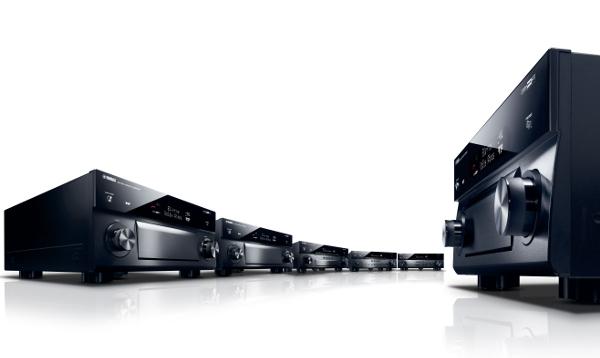Yamaha Launches AI-Infused RX-A 80 Receiver Series

Ranging in price from $600 to $2,200, the new RX-A 80 Series comprises six models slated for roll-out between May and July, three of which employ artificial intelligence to achieve a “clearer, more engaging listening experience.”
Yamaha says its new Surround:AI technology analyzes audio characteristics such as dialogue, sound effects, and channel balance in real-time, compares the data to a reference database of movie scenes, and makes adjustments to enhance the sound field. Potential enhancements include making dialogue more intelligible in scenes with a lot of background noise. The feature is offered on the three top models, all due out in July: the 7.2-channel RX-A1080 ($1,300), 9.2-channel RX-A2080 ($1,700), and 9.2-channel RX-A3080 ($2,200).
Although the AI-based processing is limited to the series’ top receivers, all six models — including the RX-A680 ($600) and RX-A780 ($700) due out in May and the RX-A880 ($1,000) due out in June — are equipped with Yamaha’s MusicCast Surround technology, which allows for a 5.1-channel setup with wireless surround speakers, an aluminum front panel, and a sturdy “frame-and-beam” chassis with a fifth foot designed to dampen sound-degrading resonances.
Features common to all six models includes streaming via Bluetooth and Wi-Fi, Dolby Atmos and DTS:X surround processing, voice control of commonly used functions such as volume and play/pause/skip via Amazon Alexa-equipped devices, 4K passthrough, and out-of-the-box support of three high dynamic range (HDR) formats: HDR10, Dolby Vision, and Hybrid Log-Gamma (HLG).
All models support Yamaha’s MusicCast multiroom wireless audio platform along with Apple AirPlay and provide built-in access to internet radio and a number of streaming services, including Pandora, Spotify, SiriusXM, Deezer, Tidal, and Napster. Integration with Control4 and RTI home automation control systems is also standard.
Each of the three top models offer enhanced system flexibility via three HDMI outputs — two for home theater rooms that make use of a flat-screen TV and video projector plus a third for distributing 4K video and surround sound to a TV in a second room.
Moving from the lowest to highest, here’s a quick rundown of each receiver:
The RX-A680 is a 7.2-channel receiver capable of driving a 5.2.2-channel speaker layout. It features Yamaha’s YPAO sound optimization and has four HDMI inputs and one HDMI output, all of which support 4K video at up to 60 frames per second with HDCP 2.2 copy protection.
The RX-A780 steps up to the more sophisticated YPAO-R.S.C. (Reflected Sound Control) and YPAO Volume processing and provides five HDMI inputs, two HDMI outputs, and Zone 2 audio, which sends audio from a source different from the one playing in the main listening room to a pair of speakers in a second room.
The RX-A880 has higher power output (100 watts per channel) than the two lower models and seven HDMI inputs, two HDMI outputs, and YPAO-R.S.C room correction with Yamaha’s more refined Precision EQ and multipoint calibration.
The RX-A1080 boasts an ESS SABRE 32-bit digital-to-audio converter (DAC) for an “outstanding signal-to-noise ratio” and Cinema DSP HD3, which is said to expand the sound field of Dolby Atmos and DTS:X soundtracks. It also has seven HDMI inputs and steps up to three HDMI outputs and 110 watts of power per channel.
The RX-A2080, which brings 9.2 channels of amplification into the fold with the capability of driving 7.2.2- or 5.2.4-channel speaker configurations, steps up to 140 watts per channel and has two 32-bit ESS SABRE DACs.
At the top of the line, the 9.2-channel RX-A3080 supports 11.2-channel surround processing, has additional DAC upgrades, and steps up to 150 watts of power. When connected to an external amplifier, the A3080 can deliver a 7.2.4-channel Dolby Atmos or DTS:X sound field.
For more information, visit usa.yamaha.com.
























































